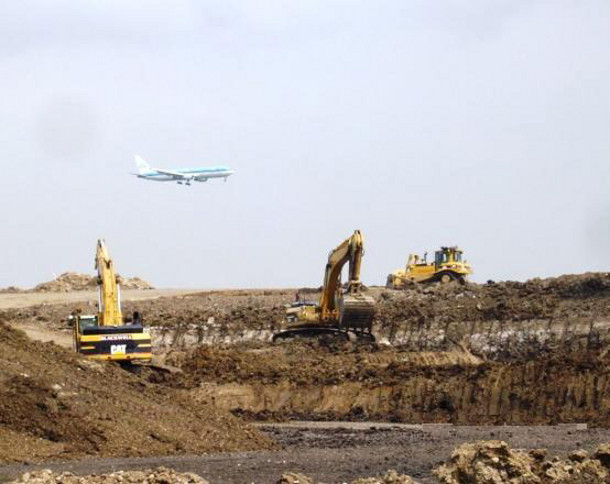
Major earthworks at Heathrow’s Terminal 5. Image courtesy of Tim O’Hare Associates.
Tim O’Hare Associates LLP is a leading independent environmental consultancy based in the United Kingdom specializing in soil science and landscape engineering, including soil science, topsoil, habitat creation, sales pitch agronomy, and more. A few weeks ago I talked to Tim O’Hare himself to learn more about its reuse, recovery, and what it really means to manufacture soil. -LM
Today, most people in the landscape industry are aware of soil scientists. What was it like when you were starting out?
I started working as a soil scientist 20 years ago when landscape architects and contractors would send me a bag of soil from a site they were working on and ask me to test it. The problem was that the results that came back were very technical; people who weren’t trained in soil science wouldn’t necessarily know how to interpret them. I would therefore interpret the results in to plain language so that my clients could understand them, and also provide recommendations for improving the soil. Test results aren’t very useful if you don’t know what to do with them!
Is testing site soils pretty standard?
Soil testing and interpreted analysis are becoming more standard, yes. Soil testing is certainly a core service of ours, but we like to be involved in the design phases as much as possible too. I much prefer to do a proper site soil survey rather than just testing sampling few bags of soil; you get much more information and it helps steer the design more meaningfully. In the US, landscape architects tend to have more training in soil science and are more involved in the project during construction – that’s less the case in the UK. For example, in the UK it’s not typical for a landscape architect to do a site inspection with a soil auger and carry out testing, but landscape architects do realize there is a need for it. This is where we come in.
Who are some of your typical clients?
Our involvement on most projects is initiated through landscape architects, but we also work for contractors, developers, councils and engineers. We also do a lot of work for topsoil suppliers and manufacturers. Our skills support all elements of land development, management and regeneration, from initial planning stages, detailed design, tendering, through to construction and aftercare.
We often get initially involved with a project by doing a soil survey or appraising an existing ground investigation report. If it’s a brownfield site, usually a geotechnical evaluation has already been done, which we will then evaluate through a landscape eye – looking at phytotoxic contaminants and drainage potential of soils, for example. If it’s a greenfield site, we prefer to do a site visit to evaluate the soil ourselves.
We also help landscape architects with tree pit design, soil specification, land drainage and site monitoring during the construction phase. For site monitoring, we might visit once a week or once a month at key ‘soiling’ periods through the construction process to make sure the soils are managed properly. Monitoring throughout the construction phase is still somewhat the exception within the landscape industry, although of the projects we get involved with, it’s becoming increasingly common.
What size and type of project do you work on?
We will work on anything from a residential garden to a major construction project. We have worked on commercial and retail developments, hotel resorts, highways, pipeline installation, housing schemes, parks, allotments, sports facilities, off-shore projects, agricultural development and mining restoration.
Are brownfield developments quite common?
They are. 10 to 15 years ago the government made a real push toward redeveloping brownfield sites. One of the best examples of that is the London Docklands – by the 1970s that area of the city was pretty derelict, but after a major iniative to redevelop it, it has become one of the main centres of business commerce and banking in the UK. That’s just one example, but that sort of thing has happened all over the country. I’m also seeing a lot of projects to reinstate old greenfield sites, like parks. On one project I’m working on in Gibraltar, the client is turning an old car park on reclaimed land in to a park for recreation. I’m seeing a lot of regeneration of green spaces.
What we’re finding now, in the last five years, is that greenfield development is coming back. After the housing market collapsed in 2008, housing developers virtually stopped building. It’s just this year that it’s picking up again to meet the current housing needs. The government has made changes to planning to make it easier for developers to build on previously undeveloped sites – a good thing for housing, but not necessarily a good thing for the environment or soils.
You worked on the London Olympic Park and at Heathrow’s Terminal 5, right?
We did.
The Olympic Park project was very exciting, although the tender process was a little harrowing! The site included over 250 acres of parkland and soft landscaping, and since it was a heavily contaminated brownfield, much of the topsoil or subsoil could not be re-used for landscaping. Additionally, site conditions and the planting scheme meant that we knew we would be dealing with a variety of soil types. We were the project Soil Scientist throughout the design and construction phases, so we worked with the whole team of landscape architects, ecologists, engineers, environmental consultants and contractors. Among other tasks, the design phase involved developing soil profiles and detailed soil specifications throughout the park. The construction phase involved development of a monitoring programme to oversee the manufacture, importation, placement and management of all the soils (84,000m3).
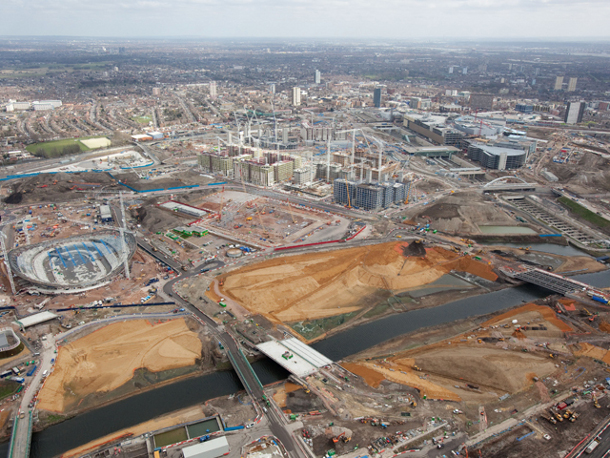
The Olympic Park (before). Image courtesy of Tim O’ Hare Associates.
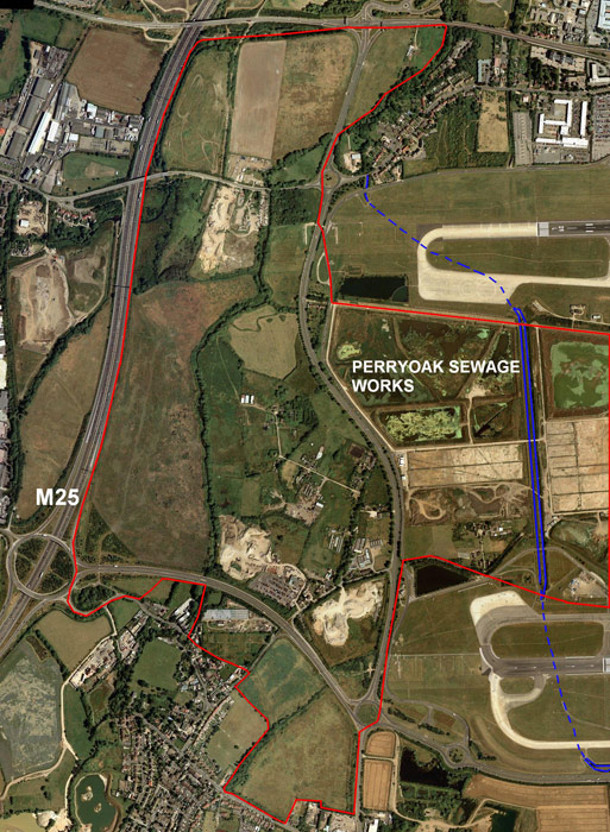
Heathrow Airport’s Terminal 5 (before). Image courtesy of Tim O’ Hare Associates.
The Terminal 5 development at Heathrow Airport was, at the time, the largest construction project in Europe. It used to be the largest sewage works in Europe – in fact at 260 hectares, it is slightly larger than the Olympic Park project! It was our job to ensure that the soils that we used for the landscape scheme were fit for purpose. This involved trying to maximize how much of the existing soils on the site were recovered and reused properly, surveying of the different soil types of the site (there were a variety of natural and manmade soils), and developing a strategy of recovering, segregating, processing, and reinstating the soils. In the end, we did this for 140,000 m3 of topsoil and 3,000 trees were planted including some large London plane trees at the terminal interchange.
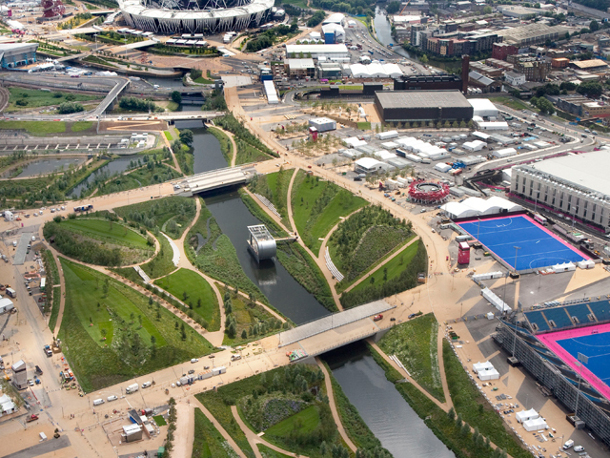
The Olympic Park (after). Image courtesy of Tim O’ Hare Associates.
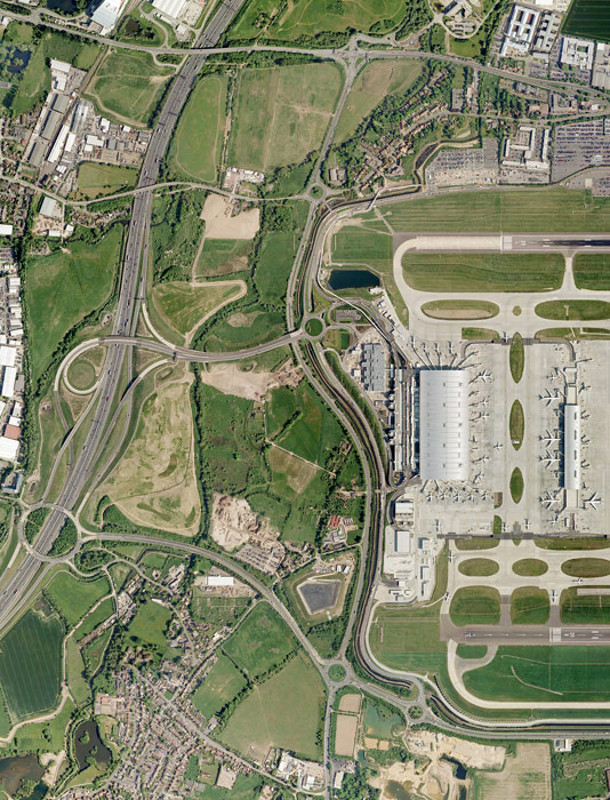
Heathrow Airport’s Terminal 5 (after). Image courtesy of Tim O’ Hare Associates.
You were involved in re-writing the British Standard on topsoil too, right?
Yes, I sit on the British Standards committee for updating standards associated with topsoil, subsoil and other growing media. I worked on the standard for topsoil BS3882 (2007), which is the main quality standard used for trading and sourcing topsoil. It was a great project, but also a challenging one. Trying to write a spec for the UK, where we have an incredible variety of soils, weather and landscapes, is tricky. As a result, the final document is very broad. It is actually currently being revised again; we’re tweaking the testing methods for manufactured soils and salinity issues that weren’t addressed sufficiently in the previous version. We have also been working on the new British Standard for Subsoil (BS8601), which is due to be released in the next few months.
Soil is often perceived as a waste product on construction sites, when really, good soil is incredibly valuable.
Exactly; I actually worked on a Department for Environment Food and Rural Affairs [DEFRA] report to create a code of practice to minimize soil waste during the construction process.
Previously, soil on construction sites was frequently being degraded, often unnecessarily and beyond repair. Through my involvement in writing the British Standards on topsoil, I was asked to write a Code of Practice for management of soil of construction sites, which was fantastic. Recovering and storing topsoil, how to manage soil through the construction process – including the use of surveys, management plans, and the right equipment, resurrecting the soils after they’ve been sitting in storage for a while… This is the bread and butter work we’ve always done.
Because the DEFRA document is a code of practice, it’s voluntary – not compulsory. But what’s happening more and more is that Local Planning Authorities are starting to include a Condition on developments to carry out soil surveys and prepare soil management plans before construction starts in accordance with this . So we are starting to see those things happen, mostly on medium to large projects.
Soil is a complex material – is manufactured topsoil as good as “natural” topsoil?
In many instances, yes, if not even better. However, if the wrong components or proportions are used, a manufactured topsoil can make a very poor growing medium. It’s not rocket science, but it is soil science!
Soil is a complex substance. We’re not trying to make natural topsoil – we’re making a topsoil substitute. Maybe in 50 years we’ll call it ‘natural’ because it will have reached a mature and balanced state; it’s not a proper topsoil until it’s fulfilling all the services to the ecosystem. However, this substitute will deliver the same functions and services as a natural soil in a landscape construction environment. If the biology, chemistry, and structure are thriving, then we feel we’ve been successful.
The most important properties of soil are microbial activity, water attenuation, nutrient content, support (minerals/organics), drainage and aeration. As long as those are all in balance and they’re working correctly, you’ve got a growing medium that’s fulfilling its role. Whether manufactured or natural, if any of those main components get out of balance, then very quickly the plant and the ecosystem tells you that they’re not happy. We’re trying to get the balance of all those natural components right. The proof of the pudding is in the longevity.
In your experience, can many urban areas reuse their native soils for tree plantings? Or is imported soil often necessary?
Some existing soils can often be reused with minor amendments. This can be a great cost savings. The challenge for us is in getting involved early enough in the project, so we can do the testing and make sure the site soils are handled properly from beginning to end.
One of the things we make very distinct to our clients is that soils that are disturbed have to be treated differently than soils that get to stay in situ. But if you manage them properly and stockpile them properly, many disturbed soils can be reused.
What do you believe are the most pressing soil-related problems in the UK today?
It basically comes down to proper management of soils. If you look at what happens with bad soil management – flooding due to loss of soil or to compacted sub soil, struggling street trees and other plants, failure to recharge groundwater – you see that the repercussions can be felt everywhere.
The levels of organic matter in UK soils have been reducing for years and years with changes in farming practices; microbial activity and other key indicators of soil health have really dropped. But we’ve also seen an increase in organic recycling here – that is now nationally available and being used on farmland and in the landscaping industry. It’s taken a while, but that’s come to be an accepted practice, and adding that compost is helping.
So, final question: how did you become a soils specialist? What do you like working with soils?
I grew up in Jakarta, Indonesia and we had a gardener who liked growing sweet corn and other vegetables. I would spend time with him in the garden mainly digging the soil over; I suppose that was my first introduction to soil. I had always been keen on geography and biology, and in school I also studied agricultural science and I absolutely loved it. I actually wanted to get in to farming. Then I did a geology/geography degree, and one of our units was ‘Soils’ – that was when I decided soils were more important and more interesting to me than rocks. After 12 months traveling and working on farms in New Zealand and Australia – which I really enjoyed – I got a Master of Science degree in Pedology, Soil Survey & Land Evaluation at Reading University.
In the 20 years I’ve been doing this, soils are gaining more respect and getting higher up the agenda, which is something I’m proud to have helped with. The amount of work we’re invited to do varies, but we’re getting soil science on the map.






Great interview. Very informative. I have to say it left me wanting to learn more about soils and manufacturing topsoil. Thanks for this post.